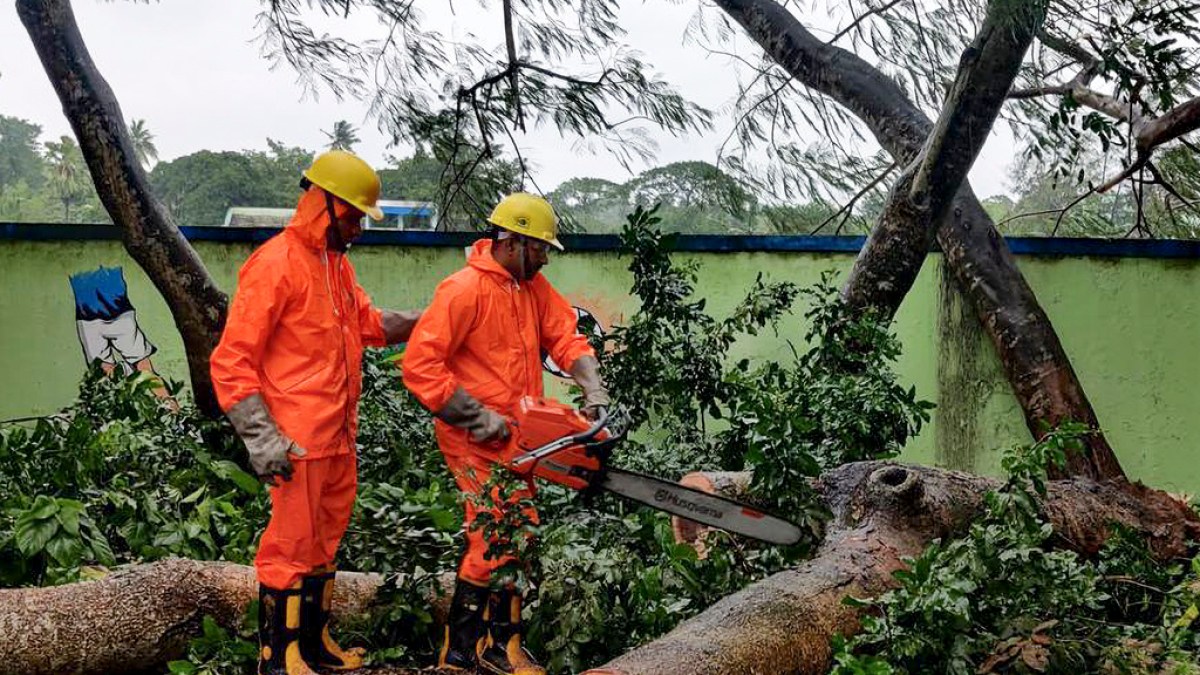

Cyclone Dana uprooted trees and power lines after making landfall on India’s eastern coast, the authorities said, warning of heavy rainfall and intense winds.
At least 1.1 million people in the states of Odisha and West Bengal were relocated to storm shelters, the AFP news agency reported, before the cyclone’s landfall after midnight on Friday, with maximum sustained winds of about 110 km/h (68 mph) and gusts up to 120 km/h (75 mph).
As of mid-morning on Friday, Dana was moving inland over the northern coast of Odisha, the India Meteorological Department (IMD) said. It is expected to “weaken gradually” into a depression in the next six hours.
No deaths have been reported so far, Odisha Chief Minister Mohan Charan Majhi was quoted by India’s The Telegraph newspaper as saying.
“Our zero-casualty mission has been successful with cooperation of everyone,” Majhi said.
District official Siddarth Swain told AFP that the storm had left a “trail of destruction” in the coastal town of Puri.
“Many trees and electric poles are uprooted,” he added. “Makeshift shops on the sprawling beach have been blown away.”
Dana also flooded parts of the coast after triggering a surge in sea levels of up to 1.15m (3.75 feet).
The Sundarbans, the largest mangrove forest in the world, was hit by a “gale-force wind” that caused hundreds of trees to be uprooted, West Bengal minister Bankim Chandra Hazra told AFP.
“The cyclone also damaged hundreds of homes, blowing off roofs in coastal areas,” he added.
Major airports have been shut since Thursday night in West Bengal’s capital Kolkata, India’s third-largest city and a key travel hub, which was lashed by heavy rains.
Scientists have warned that storms are becoming more powerful as the world heats up due to climate change driven by burning fossil fuels. Warmer ocean surfaces release more water vapour, which provides additional energy for storms, strengthening winds.
A warming atmosphere also allows storms to hold more water, boosting heavy rainfall. But better forecasting and more effective evacuation planning have also dramatically reduced death tolls.
India’s eastern coasts have long been prone to cyclones, and the number of intense storms is rising along the country’s coast.
In May, Cyclone Remal killed at least 48 people in India and at least 17 people in Bangladesh, according to government figures.
The year 2023 was India’s deadliest cyclone season in recent years, killing 523 people and costing an estimated $2.5bn in damage.
Related News

British writer Samantha Harvey wins Booker Prize for space novel Orbital

Can foreign policy tip the US presidential election?

Re-election for Tlaib and Omar – first Muslim women to serve in US Congress

